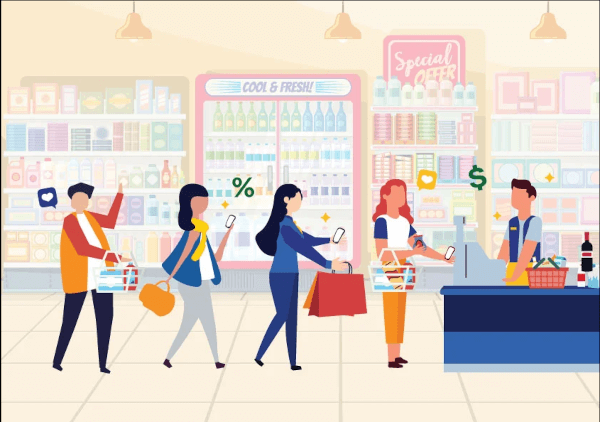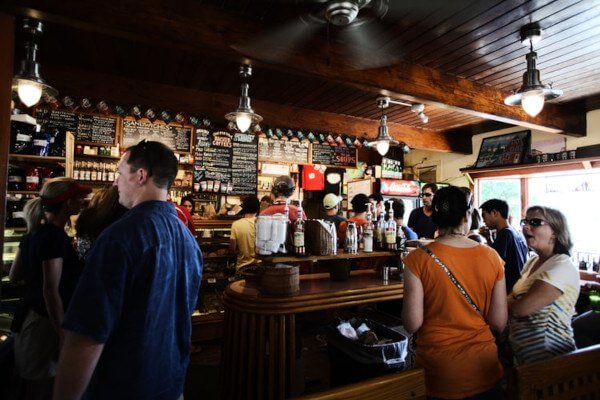
Everything you need to know about customer loyalty programs
A customer loyalty program or rewards program is a structured marketing strategy that rewards loyal customers that frequently engage with a brand. It is a combination of the use of communication, commercial incentives, marketing tactics and even games and events in order for brands to build a strong and lasting relationship with their customers and heighten their retention.
After decades of mastering and cultivating customer loyalty, Disneyland swears by their program as one of its leading assets to its multi-billion success. The creator of the ‘happiest place on earth,’ Walt Disney said, “Do what you do so well that they will want to see it again and bring their friends.”
The essence of an effective loyalty program means that customers are engaged, associate consistent positive feelings with the brand, and eventually advocate the brand to their friends and family. Customers who are emotionally loyal to a brand have proven to spend more on its products. Working on this relationship with a good loyalty program, nurtures a strong sense of trust between your brand and customers giving you a lead over your competitors, therefore ensuring the growth of your business.
According to studies, it costs businesses more to engage with and acquire new customers than it is to retain current, consistent ones. When a customer has a delightful and remarkable experience with your brand, it inspires their willingness to repeatedly return to and engage with your company, eventually driving referral traffic and word-of-mouth marketing. Loyal customers can even grow your business faster than your sales and marketing teams. This makes having a strong, sustainable and efficient customer loyalty program one of the most powerful, cutting edge marketing tactics for your business.
How do you keep your customers loyal?
There are several ways to keep your customers loyal and strengthen that relationship to inspire consistent and recurring engagements with your brand. First, be generous to your customers. Oftentimes loyalty programs are seen as marketing schemes that trick customers into spending more. To stand out, design a loyalty program that is truly generous. Make a program with perks and offers so good that it would not make sense to not become a member!
Another way is by showing your gratitude to your customers. Express your love and appreciation for their loyalty through handwritten notes or SMS or email messaging. You may even add thank you notes in your product deliveries, purchase confirmation emails, or newsletters. Some companies even go as far as sending special cards around the holidays or on their loyal client’s birthdays.

If you want to opt for a more minimalist approach, just scratch the program and build loyalty by providing customers with awesome benefits related to your business every time they make a purchase. This style is popular in the coffee shop businesses where they design special offers like giving a customer a free drink every time they purchase two or more of a selected product.
Lastly, nothing makes an avid customer or client feel more involved with your business than being part of a wholesome community with their peers. They’re just so many platforms online to manage a community. You can utilize social media, customer review sites, Quora or online forums to encourage positive customer-to-customer interactions. This will also be a great place for you to even get connected with them and hear feedback and remarks that will help you in developing your products or business.

Types of customer loyalty programs
Customer Loyalty Programs can come in many different forms. Some businesses use only one model, while others may combine two or more! It really depends on your business style and budget. Choose one that is unique and sustainable, while remembering that it should be a program that will keep your brand at the forefront of your customer’s minds by making them feel valued. With the right initiative, you can turn first-time buyers into repeat customers.
Point Program

The point program is perhaps the simplest and most common of all loyalty programs. Perfect for businesses that are visited frequently for short-term purchases, like Dunkin’ Donuts, it basically runs on the principle: “Spend more to get more.” Every time a customer makes a purchase, they acquire a certain amount of points depending on the size or quantity of their purchase. These points are then translated into some type of reward. The point system urges customers to work toward collecting a certain amount of points to redeem their reward.
Spend-Based Loyalty Programs

Spend Programs are easy to understand, create and maintain with customers acquiring loyalty credits for the amount they spend at a business. It is also proven to be an effective way to increase transactions and reduce the churn rate. This is often used by supermarkets and department stores where loyal customers can track and add credits to their account through a loyalty card that is presented every time they make a purchase.
Tiered Programs

Tiered Programs are based on levels of loyalty. This provides a perfect balance between rewards that attainable and desirable at the same time. Customers get points whenever they purchase something. The more points they receive, the higher loyalty level they will reach. And the higher the level, the more rewards they will get. This program encourages repeat customers by increasing the value of the rewards as they move up the loyalty ladder. The tiered programs work best for businesses with high commitment, higher price-point businesses with long-term loyalty values like airlines, hospitality businesses, or insurance companies.
Paid Programs – VIP member club

To make them feel more special and encourage them to engage more with your brand, you may also come up with a “Members Only” or “VIP Member Club” option for your loyal customers. It makes them feel like they have an "in" with the business and get an advantage over people who aren't. In this program, customers pay a monthly or annual fee to join your VIP member club. Here, they have access to special services, discounts, or unique opportunities. Your loyal customers in the paid program are eligible to enjoy perks and benefits that are exclusive to members only.
Value-based Programs

The Value-based program requires you to understand the values and desires of your target audience or customers. In doing this, you inspire customer loyalty by targeting those values or advocacies. First, you have to define the values of your business. Similar to a point system, where customers' purchases translate into reward currencies, their purchase would be equivalent to a certain amount of donation or contribution of your business to a cause in line with your advocacy. For example, you run a retail shop that sells wellness products. Every time a customer purchases something that exceeds a certain amount, you would donate a designated portion to a cancer research organization. This reward system allows you to connect with customers on a deeper level and resonate with them through a wholesome and ethical relationship.
Partnered Program

By partnering with another business, the partnered program is a loyalty strategy that offers your loyal customers more opportunities. You have to decide the best business fit for a good partnership based on your customers' everyday needs and purchases. For example, if you are a health and fitness company you may partner with a health center or gym to offer co-branded deals.
This strategy shows that you go out of your way to care and look after the needs of your customers eventually driving loyalty. Plus, it helps you grow your network to reach your partners' customers, too.
Game Program

A good game can always shake your loyalty program up a bit, and encourage repeat purchases, increase customer loyalty, entertain customers and help strengthen your brand’s image in a more engaging and exciting way. Make sure the purchase requirements are attainable and that your legal department is fully informed prior to making your contest public. Make sure you design games that don’t make your customers feel like you’re dumping them off of their rewards.
Customers can also be prompted to complete other engagement actions, such as social media sharing, content creation or other brand engagement.
Hybrid Loyalty Programs

A hybrid loyalty program is a fusion of more than one type of loyalty strategy. You may combine two different systems such as the tier and the game program, where customers reach new levels of loyalty every time they complete a new level in your game.
The combination of the point-based system with a tier program is the most common as it makes the calculation of points easy for the customers and encourages them to pursue the next loyalty level and thus, more purchases.
Pros and Cons of the Loyalty Programs
Just like everything else in the business world, each loyalty program comes with their own sets of pros and cons. It's important to be aware of them and weigh them down well to see which works best for your business.
| Type of Loyalty Program | How it works | Perfect for what type of business | Pros | Cons |
|---|---|---|---|---|
| Point Program | Every time a customer makes a purchase, they acquire a certain amount of points depending on the size or quantity of their purchase. | Businesses with high term frequency and fast, short-term purchases like food stands, coffee shops, book stores, etc. | Easy to use, incentivized customer identification, easy and fast implementation, convenient and easy to budget, customers perceive a higher value | Not for businesses long-term purchases with low frequency, competitors can easily copy the formula with better discounts because it lacks a unique selling point. |
| Spend-Based Programs | Customers acquire loyalty credits for the amount they spend at a business. | Supermarkets and department stores | Optimizes customer retention by encouraging repeat purchases to increase their loyalty credits. Provides businesses with a direct line of communication with customers through the material used to track their credits (card, barcode, QR code, etc) that is synced to a database with their contact details and purchase history. | Since this is one of the most frequently used loyalty programs, it is not considered unique and may have already saturated the market thus making it quite hard for you to stand- out from competitors. Inconsistent profitability since overtime the purchase habits and needs of the customers change. |
| Tiered Programs | Customers get points whenever they purchase something. The more points they receive, the higher loyalty level they will reach. And the higher the level, the more rewards they will get. | High commitment, higher price-point businesses with long-term loyalty values like airlines, hospitality businesses, or insurance companies | Adds value to status, establishes a long-lasting relationship, customers are willing to keep spending to prevent losing valued privileges. It also discourages competition since | Once customers reach the highest tier, they feel entitled to the related benefits, and this kind of sentiment can make it more difficult to adjust the benefits and rewards later on. |
| Paid Programs – VIP member club | Customers pay a monthly or annual fee to join your VIP member club. Here, they have access to special services, discounts or unique opportunities. | Brands with low purchase frequency and focus on exclusivity: hotels, airlines, hospitality businesses, or insurance companies | Easy to manage, support brand building and your customers feel indebted to your company for the benefits. It has a high value for money and highlights services uniquely offered by your business | This program suffers from a lack of customer investment. Since customers have no clear goal to work towards, their shopping behavior is slower to change. |
| Value – based Programs | Customers' purchases turn late into reward currencies, their purchase would be equivalent to a certain amount of donation or contribution of your business to a cause in line with your advocacy. | Advocacy and would like to strengthen their brand identity | Connect with customers on a deeper and personal level, promotes brand advocacy | Not a stand-alone loyalty programs, but are instead an add-on to another loyalty program structure |
| Partnered Program | Works when your business partner with another business to provide your customers with more opportunities and offers that can cater to your customer’s everyday needs and purchases. | Any business | Shows that you go out of your way to care and look after the needs of your customers. It helps you grow your network to reach your partners' customers, too. | Requires more work and effort in coordination with the other party involved and in creating the requirements of the program since this is a combination of two or more businesses that should mutually benefit. |
| Game Program | Loyalty program the incorporates contests or games to make the customer’s purchasing process more engaging and exciting | Any type of short-purchase business like restaurants, food chains, coffee shops, retail shops | Encourage repetitive behavior and engagements beyond transaction, more ease and hype in marketing | If challenges become too complex, it can be hard to explain the rules, demanding additional communication efforts on your part. The system also requires regular updates, or else the concept becomes dry and customers abandon the program. |
| Hybrid Loyalty Programs | Combination of two or more loyalty programs in one business to give customers more opportunities to gain rewards | Any type of business | Caters more to your target audience and customers’ needs and purchasing process | Requires more work in the requirements and criteria since this a combination of two or more programs |
Conclusion
Make sure you create a loyalty program that best suits your business style, budget and objectives. Paired with your brand’s remarkable service and quality products, it is always best to present your loyalty program with charm to capture your customers’ hearts and keep them coming back for more. Through strengthening your relationship and building a great emotional connection with them, your brand can easily become a part of your customer’s daily life. With just the right initiative and approach, your customer loyalty program is your key to a successful business venture.